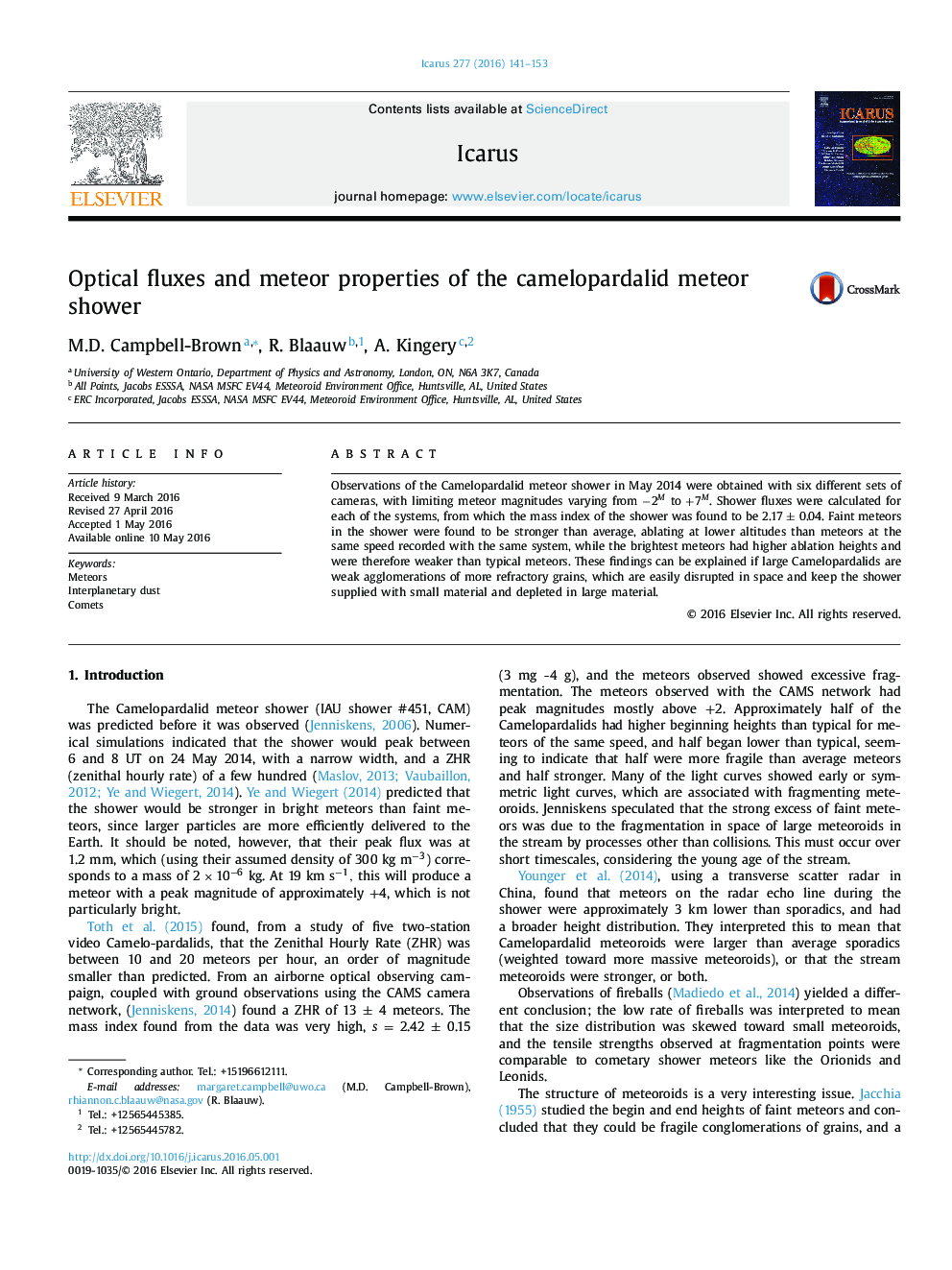| Article ID | Journal | Published Year | Pages | File Type |
|---|---|---|---|---|
| 8134906 | Icarus | 2016 | 13 Pages |
Abstract
Observations of the Camelopardalid meteor shower in May 2014 were obtained with six different sets of cameras, with limiting meteor magnitudes varying from â2M to +7M. Shower fluxes were calculated for each of the systems, from which the mass index of the shower was found to be 2.17 ± 0.04. Faint meteors in the shower were found to be stronger than average, ablating at lower altitudes than meteors at the same speed recorded with the same system, while the brightest meteors had higher ablation heights and were therefore weaker than typical meteors. These findings can be explained if large Camelopardalids are weak agglomerations of more refractory grains, which are easily disrupted in space and keep the shower supplied with small material and depleted in large material.
Keywords
Related Topics
Physical Sciences and Engineering
Earth and Planetary Sciences
Space and Planetary Science
Authors
M.D. Campbell-Brown, R. Blaauw, A. Kingery,
